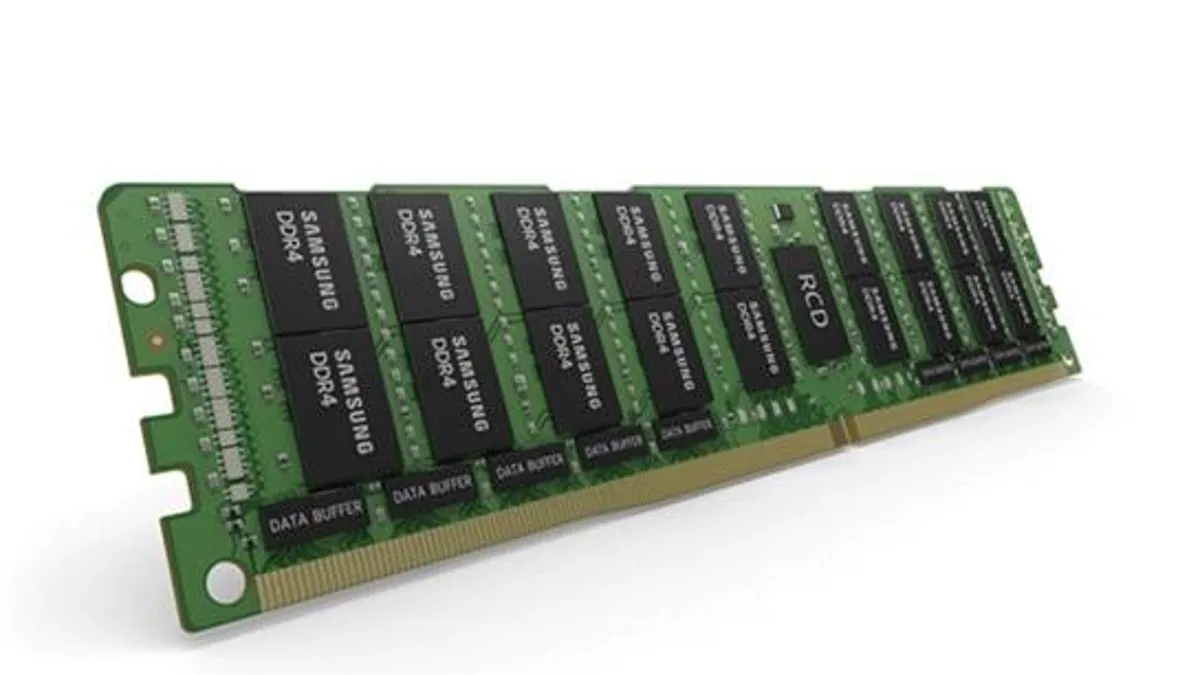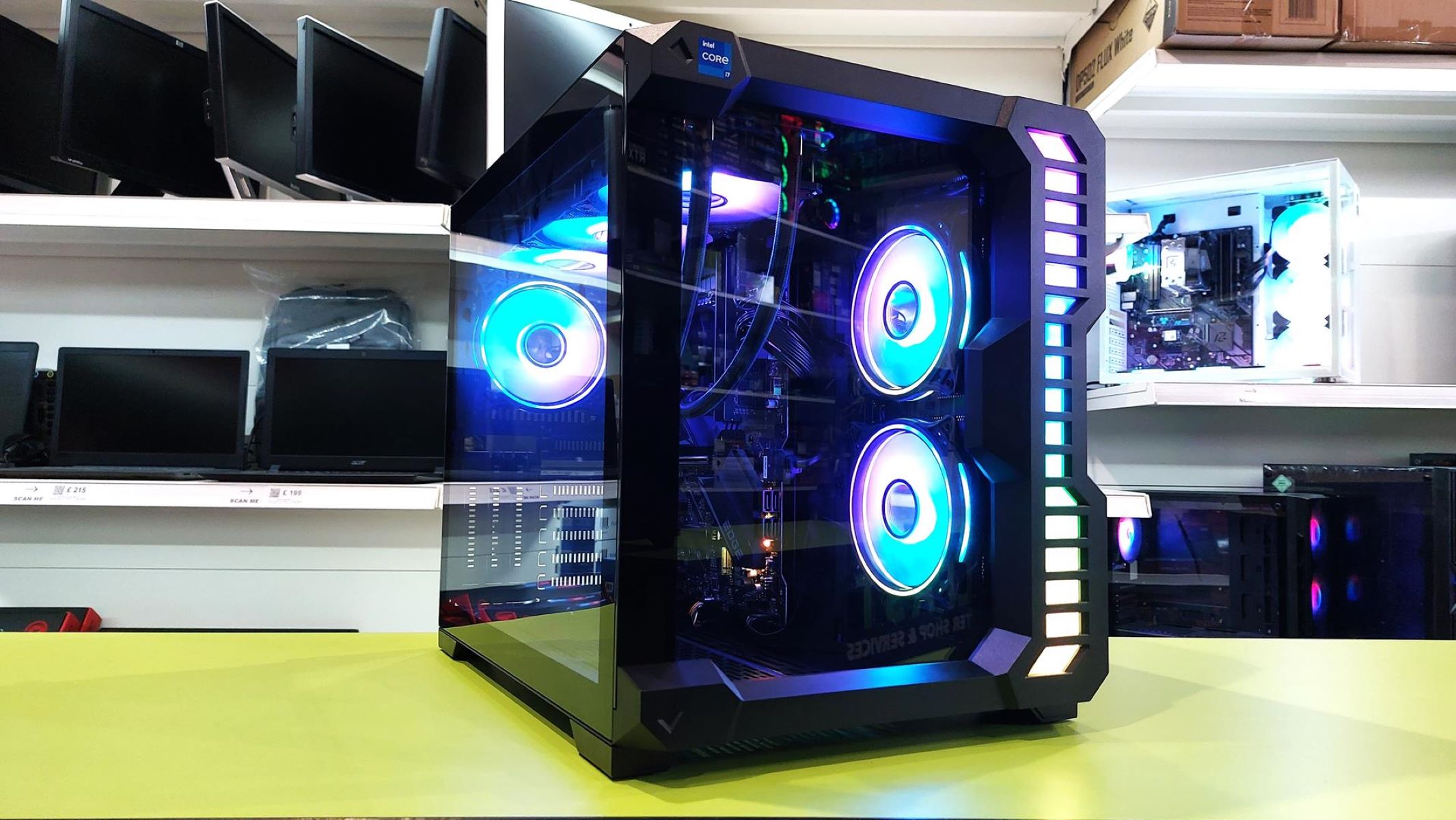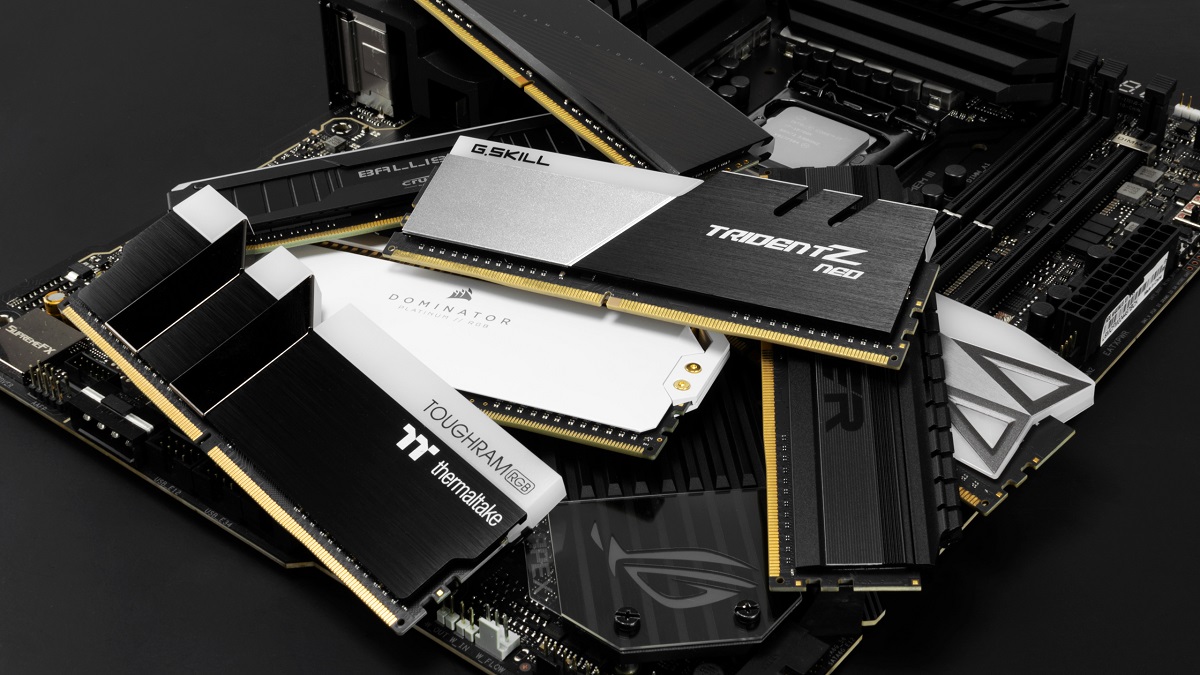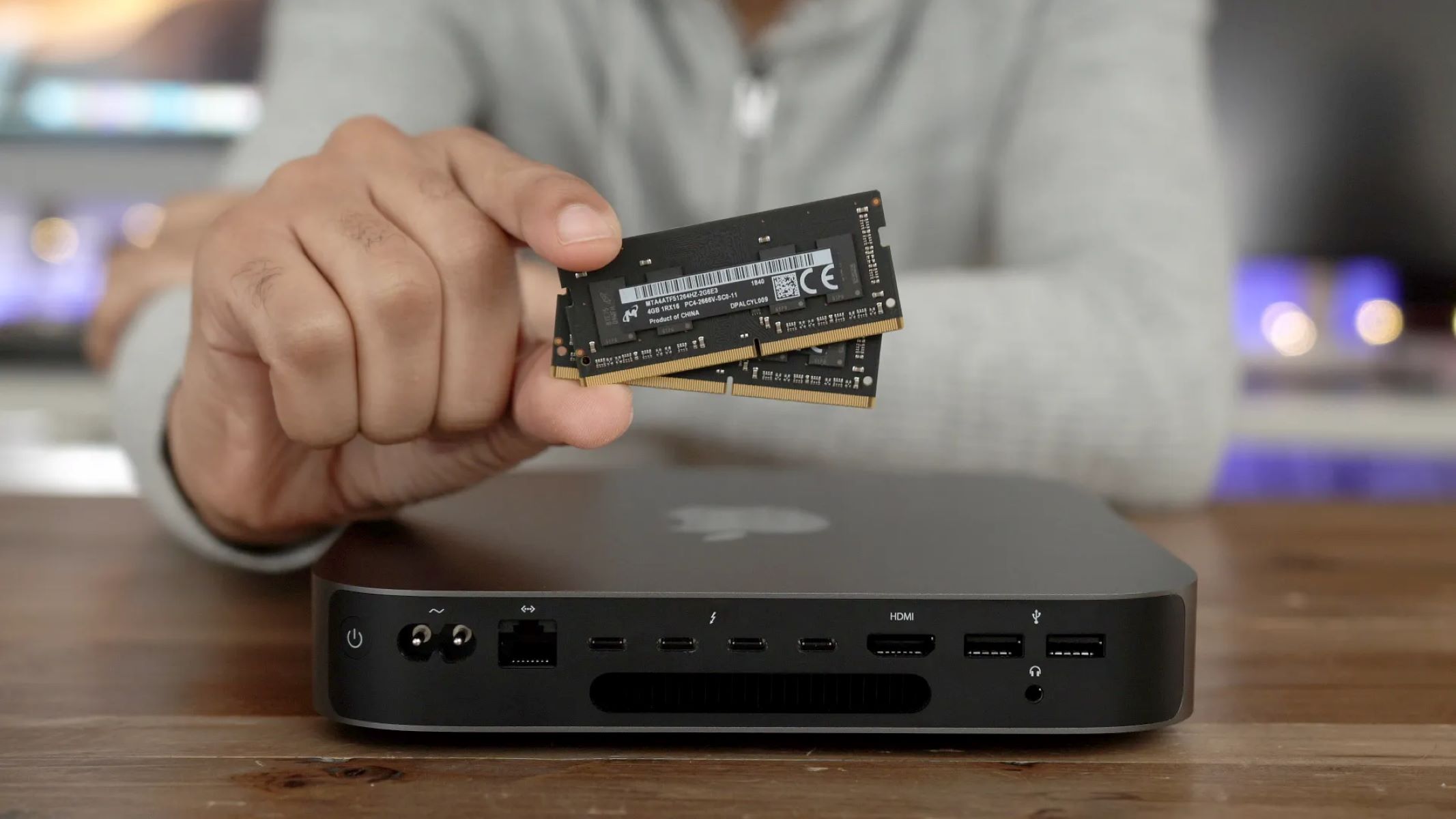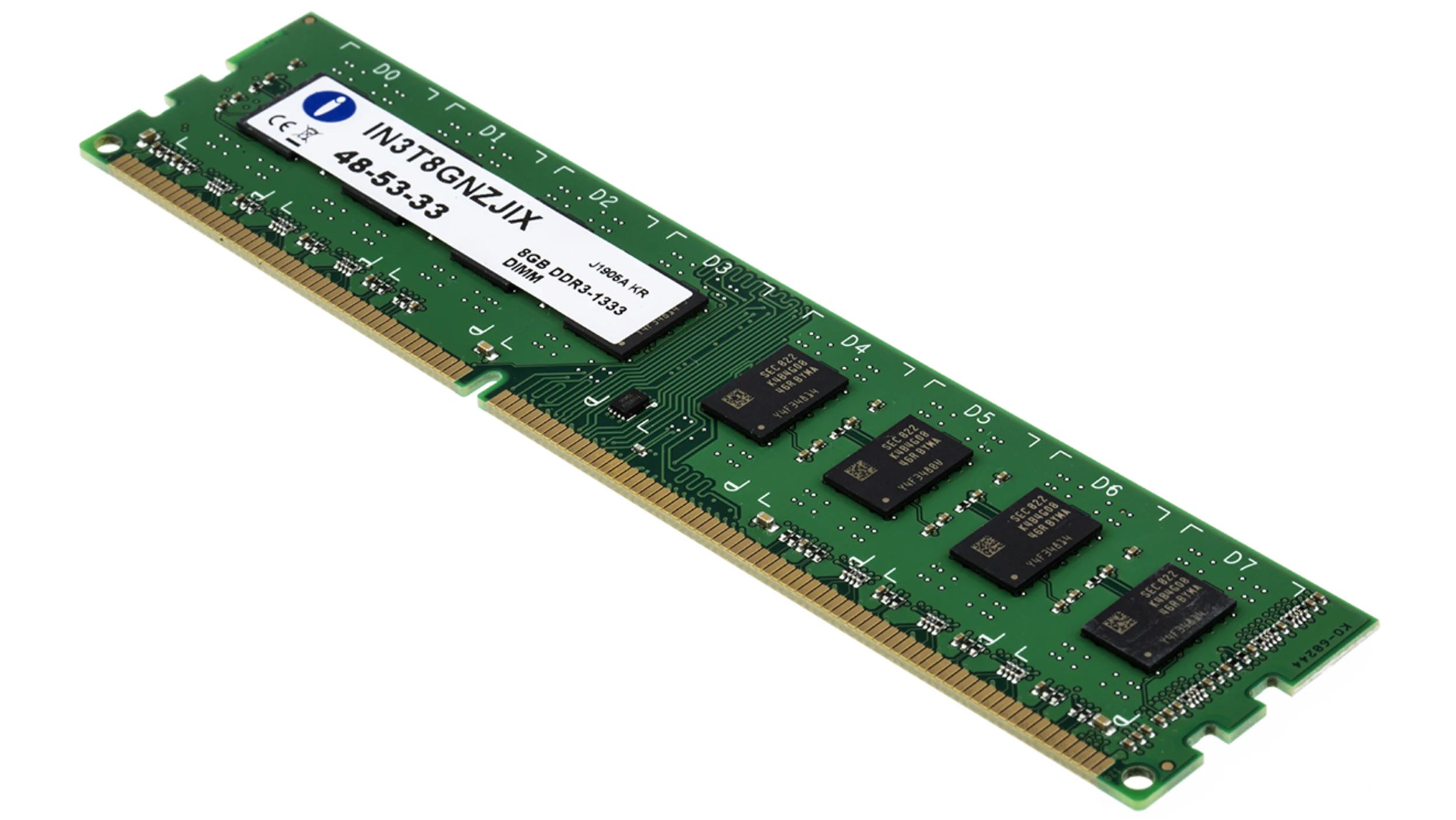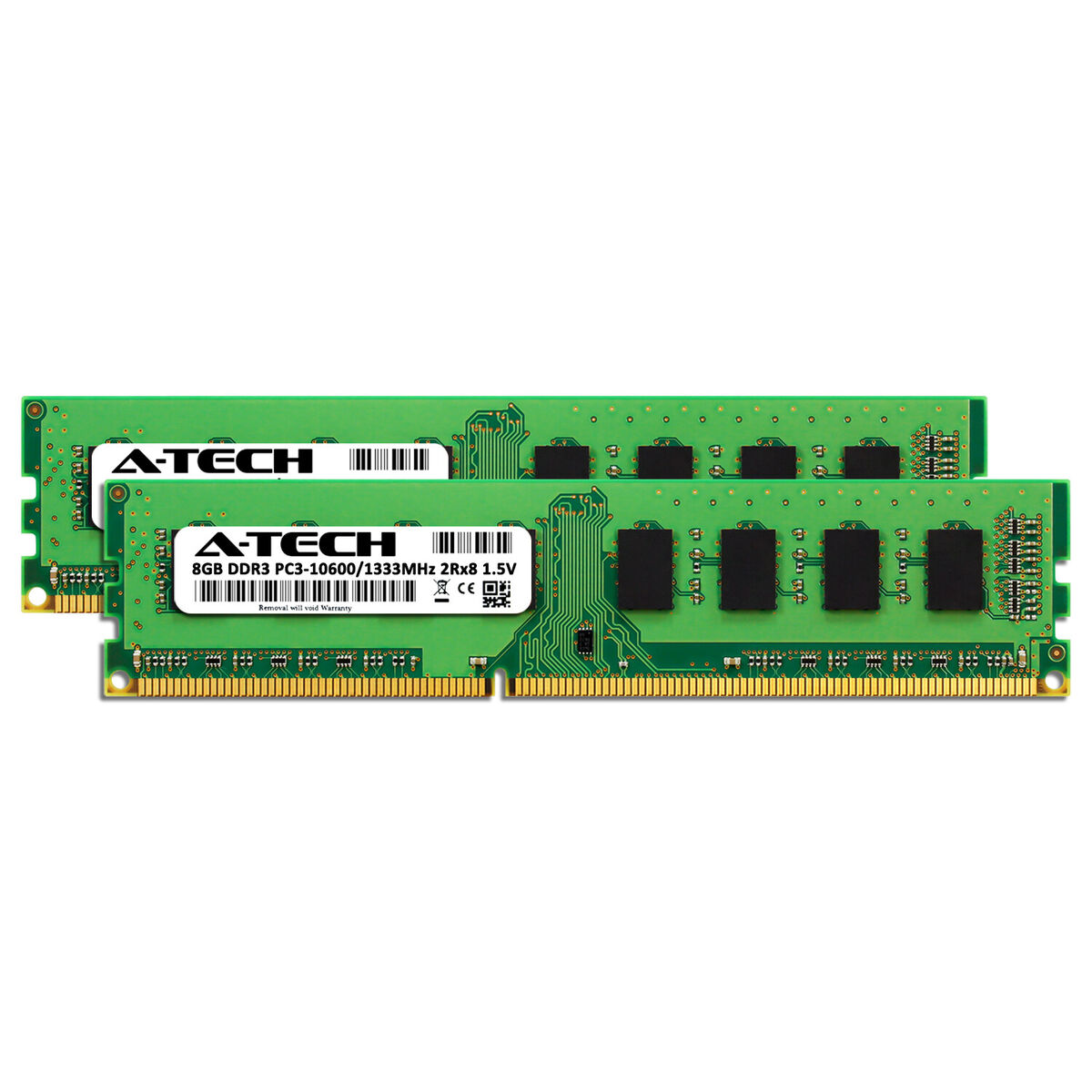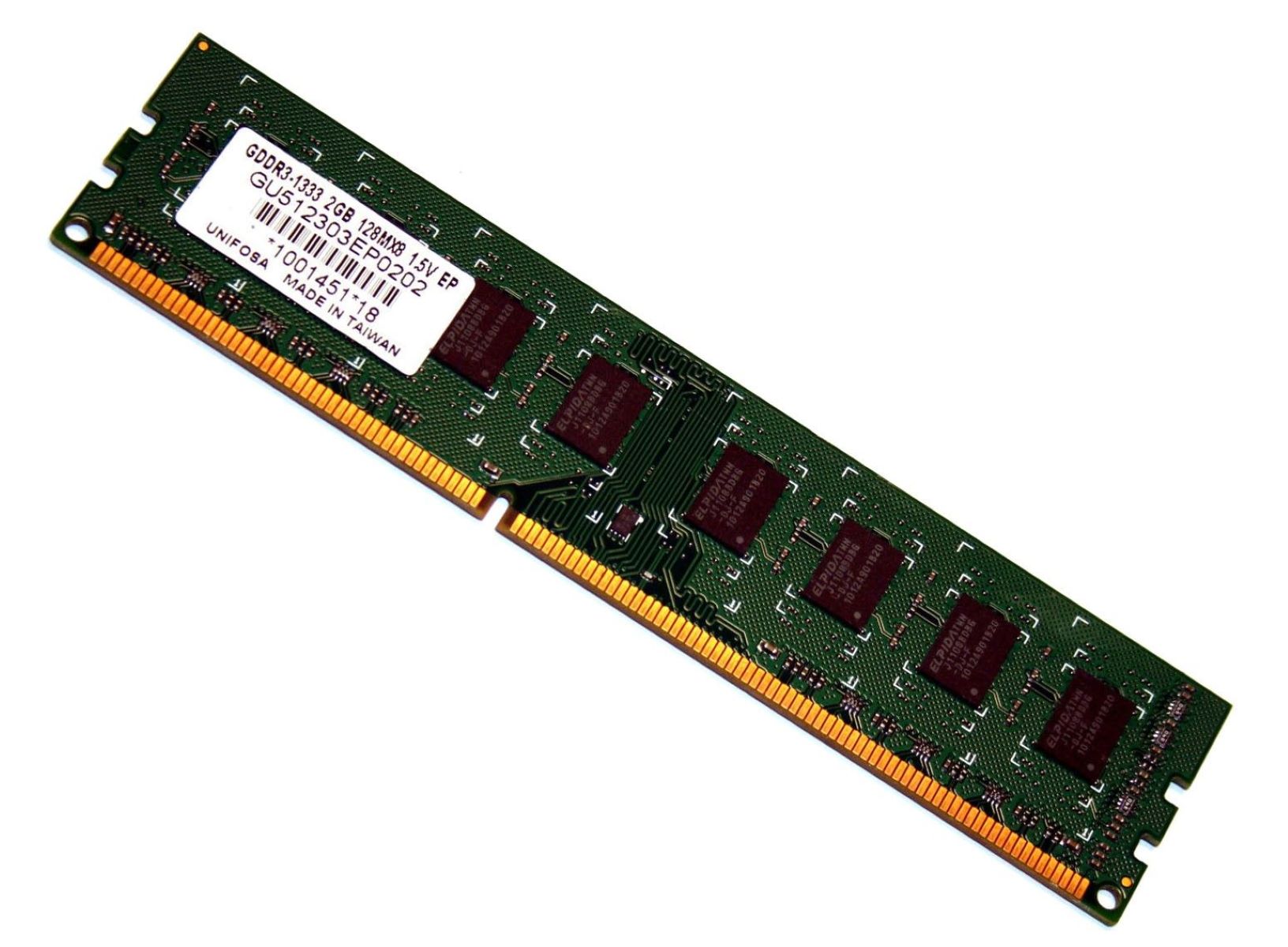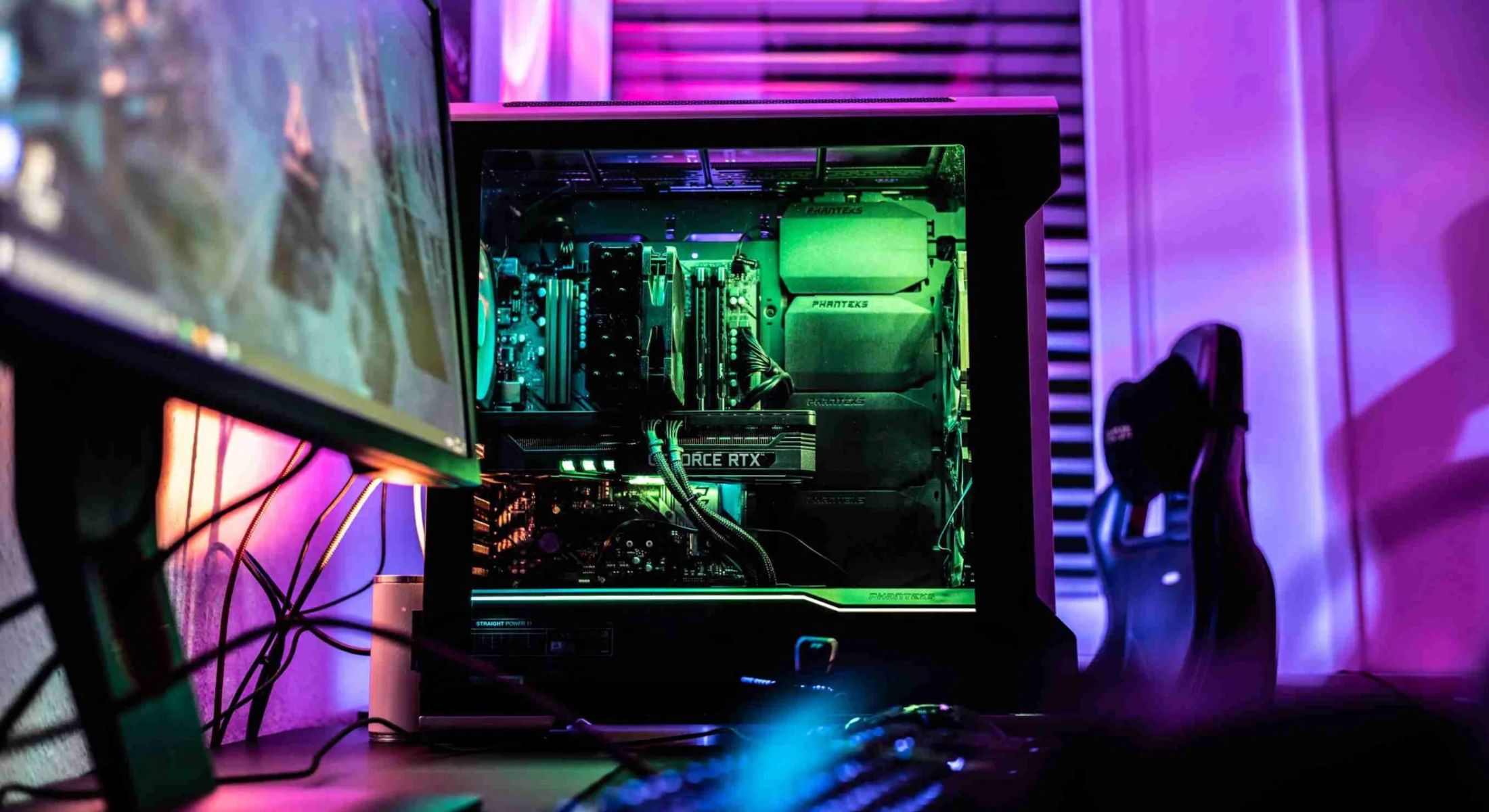What is RAM?
RAM, or Random Access Memory, is an essential component of a computer that plays a crucial role in its performance. It is a type of computer memory that temporarily stores data that the processor can access quickly. Think of it as the computer’s short-term memory, allowing programs and data to be easily and quickly accessed while the computer is running.
RAM operates at high speeds, providing the processor with the necessary data to carry out tasks efficiently. The more RAM a computer has, the more data it can store and access at once. This directly affects the computer’s speed and multitasking capabilities.
When you open a program on your computer, it gets loaded into RAM, allowing the processor to access the program’s instructions and data more quickly. Similarly, when you open multiple programs simultaneously, each program is loaded into RAM, enabling the processor to switch between them seamlessly.
RAM differs from the computer’s permanent storage, such as the hard drive or solid-state drive (SSD), as it is volatile memory. This means that when you shut down or restart your computer, the data stored in RAM is lost. Therefore, it is crucial to save any unsaved work before shutting down the computer.
RAM comes in various capacities, typically measured in gigabytes (GB). Common RAM capacities range from 4GB to 32GB or more, depending on the computer’s requirements and the user’s needs. The amount of RAM a computer requires depends on factors such as the operating system, programs used, and the type of tasks performed.
In summary, RAM is an essential component of a computer that provides temporary storage for data and instructions needed by the processor. It plays a significant role in enhancing a computer’s speed and multitasking capabilities. The amount of RAM needed depends on various factors and can greatly impact a computer’s performance.
Factors that Affect the Cost of RAM
The cost of RAM can vary significantly based on several factors. Understanding these factors can help you make informed decisions when purchasing RAM for your computer. Here are some of the key factors that can influence the price of RAM:
- Type of RAM: There are different types of RAM available in the market, such as DDR3, DDR4, and DDR5. Each type of RAM has its specifications and compatibility with different computer systems. Generally, newer generations of RAM tend to be more expensive due to their improved performance and efficiency.
- Capacity: The capacity of RAM, measured in gigabytes (GB), significantly impacts its price. Higher capacity RAM modules are typically more expensive than lower capacity ones. If you require more RAM to handle memory-intensive tasks like video editing or gaming, you may need to invest in higher capacity modules, which can increase the overall cost.
- Speed: RAM speed, measured in megahertz (MHz), refers to how quickly data can be transferred to and from the memory module. Higher speed RAM modules tend to be pricier due to their improved performance. However, it’s essential to consider the compatibility of the RAM speed with your computer’s motherboard. If your motherboard supports a lower speed, investing in higher speed RAM may not provide a significant performance boost.
- Brand: The brand of RAM can also play a role in its pricing. Well-established brands with a reputation for producing high-quality and reliable RAM modules typically charge a premium for their products. However, it’s worth considering that there are also reputable budget-friendly brands available that offer reliable performance at a more affordable price point.
- Market Demand: Like any other product, the demand for RAM can impact its price. During periods of high demand, such as when a new generation of computer hardware is released, the price of RAM may increase. Conversely, during periods of low demand, you may be able to find better deals and discounts.
It’s important to consider these factors carefully and find the right balance between your budget and the requirements of your computer. Assessing your needs and understanding the specifications of RAM modules can help you make an informed decision and get the best value for your money.
Different Types of RAM and Their Prices
When it comes to RAM, there are several different types available in the market, each with its own specifications and price range. Understanding the different types of RAM can help you choose the right one for your computer. Here are the most common types of RAM:
- DDR3 RAM: DDR3 (Double Data Rate 3) is an older generation of RAM that offers reliable performance at a more affordable price point. It is compatible with many older computer systems and is available in various capacities, ranging from 4GB to 32GB. Depending on the brand and capacity, DDR3 RAM modules can range in price from around $20 to $80.
- DDR4 RAM: DDR4 (Double Data Rate 4) is the successor to DDR3 and offers improved performance, higher data transfer speeds, and lower power consumption. It is the standard RAM type for most modern computers. DDR4 RAM modules come in capacities ranging from 4GB to 128GB and are available in various speeds. The price of DDR4 RAM modules can range from around $30 for lower capacity modules to several hundred dollars for higher capacity and higher speed modules.
- DDR5 RAM: DDR5 (Double Data Rate 5) is the latest generation of RAM, offering even higher performance than DDR4. It features faster data transfer speeds and increased capacity. DDR5 RAM is relatively new to the market, and prices are higher compared to DDR4. Expect to pay a premium for DDR5 modules, with prices starting from around $100 for lower capacity modules and going up to several hundred dollars for higher capacity modules.
- LPDDR RAM: LPDDR (Low Power Double Data Rate) RAM is a type of RAM commonly used in mobile devices like smartphones and tablets. It is designed to be energy-efficient and requires less power compared to other types of RAM. LPDDR RAM modules come in various capacities, ranging from 2GB to 8GB, and their prices can range from around $10 to $50 depending on the capacity and brand.
It’s essential to consider the compatibility of the RAM type with your computer’s motherboard and the requirements of your specific tasks. While DDR4 is the most common choice for modern computer systems, older systems may still require DDR3 RAM. Additionally, the price of RAM can vary depending on factors such as brand reputation and speed.
When purchasing RAM, it’s advisable to compare prices from different retailers and consider customer reviews to ensure you’re getting a good deal. Additionally, keep an eye out for promotional offers or discounts that can help you save money without compromising on quality.
How Much RAM Do You Really Need?
The amount of RAM you need for your computer depends on various factors, such as the operating system you’re using, the applications you frequently use, and the type of tasks you perform. While there is no definitive answer to how much RAM you really need, here are some general guidelines to help you determine the appropriate amount:
Basic Usage: If you primarily use your computer for basic tasks like web browsing, email, word processing, and streaming videos, 4GB to 8GB of RAM should be sufficient. These tasks do not generally require a significant amount of RAM to operate smoothly.
Multitasking and Productivity: If you frequently multitask, use productivity software, or work with multiple applications simultaneously, you may benefit from having 8GB to 16GB of RAM. This allows for smoother multitasking and prevents your computer from slowing down when running multiple programs at once.
Graphics Design and Video Editing: If you work with graphics-intensive applications like Adobe Photoshop, Illustrator, or video editing software, you will likely require more RAM. 16GB to 32GB of RAM is recommended to handle the large file sizes and complex operations involved in these tasks.
Gaming: Gaming can be resource-intensive, especially for modern games with high graphics and detailed environments. For a smooth gaming experience, it is advisable to have at least 16GB of RAM. However, if you are a serious gamer or plan to play the latest AAA titles, consider opting for 32GB of RAM or more for optimal performance.
Virtual Machines and Server Applications: If you frequently work with virtual machines or run server applications, you will need a significant amount of RAM. In these cases, 32GB or more may be necessary to ensure smooth operation and avoid performance bottlenecks.
Ultimately, it’s essential to assess your specific needs and consider the recommendations above as general guidelines. It’s also worth noting that having extra RAM beyond your immediate needs can provide room for future expansion and ensure your computer remains capable of handling new applications and software updates.
Upgrading your RAM can provide a noticeable improvement in performance. However, ensure that your computer’s motherboard supports the desired RAM capacity and that you are running a 64-bit operating system to fully utilize higher amounts of RAM.
Where to Buy RAM
When it comes to buying RAM for your computer, there are several options available to consider. Here are some of the common places where you can purchase RAM:
- Online Retailers: One of the most convenient and popular options is to buy RAM from online retailers. Websites such as Amazon, Newegg, and Best Buy offer a wide variety of RAM modules from different brands and specifications. Shopping online allows you to compare prices, read customer reviews, and choose from a larger selection of options. Additionally, online retailers often offer deals and discounts, making it a cost-effective option.
- Computer Retail Stores: Physical computer retail stores like Best Buy, Fry’s Electronics, and Micro Center also carry a selection of RAM modules. This option allows you to see the products in person and get immediate assistance from sales representatives. However, the selection may be more limited compared to online retailers, and prices may be slightly higher.
- Manufacturer Websites: Some RAM manufacturers, such as Corsair, Kingston, Crucial, and G.SKILL, have their own official websites where you can purchase RAM directly. Buying from the manufacturer ensures that you are getting genuine products and may offer additional customer support and warranty options.
- Local Computer Repair Shops: Local computer repair shops or electronics stores may also carry RAM modules. While the selection may be limited, they can be a convenient option if you need immediate access to RAM or require assistance with installation.
It’s important to consider factors such as price, warranty, and customer reviews when choosing where to buy RAM. Compare prices across different sources to ensure you’re getting the best deal. Additionally, check the warranty terms and conditions to ensure that you are protected in case of any issues with the RAM module.
Before making a purchase, it’s recommended to verify the compatibility of the RAM module with your computer’s motherboard. Review your computer’s specifications or consult technical documentation to ensure that the RAM you intend to buy is compatible with your system.
Remember that reputable brands and reliable sellers are often the safest choice when buying RAM. Read customer reviews and ratings to gain insights into the product’s performance and reliability. By considering these factors, you can make an informed decision and purchase RAM that suits your needs and budget.
Tips for Finding Good Deals on RAM
If you’re looking to purchase RAM for your computer, finding a good deal can help you save money without compromising on quality. Here are some tips to help you find the best prices and deals on RAM:
- Do Your Research: Before making a purchase, research different brands, models, and specifications of RAM. Understand the market prices and features to ensure you’re getting a fair deal. Read customer reviews and ratings to gain insights into the performance and reliability of the RAM modules you’re interested in.
- Compare Prices: Take the time to compare prices from different retailers, both online and offline. Check prices on popular online platforms like Amazon, Newegg, and Best Buy, as well as smaller, specialized computer stores. Compare prices for the same RAM model across different sellers to make sure you’re getting the best deal.
- Look for Sales and Discounts: Keep an eye out for sales events, promotional offers, and discounts on RAM modules. Online retailers often have special sales during holidays like Black Friday and Cyber Monday. Sign up for newsletters or follow social media accounts of retailers to stay informed about upcoming deals.
- Consider Refurbished or Used RAM: If you’re on a tight budget, consider purchasing refurbished or used RAM modules. These can often be found at lower prices but still offer reliable performance. Make sure to buy from reputable sellers with return policies and warranties to ensure the quality and functionality of the RAM.
- Check for Bundle Offers: Sometimes, retailers offer bundle deals where you can get additional discounts when purchasing multiple RAM modules or other computer components together. Keep an eye out for these bundle offers to maximize your savings.
- Consider Budget-Friendly Brands: While well-known brands may be reliable, budget-friendly brands can also offer reliable performance at a more affordable price. Research lesser-known brands with positive customer reviews to find good quality RAM modules at lower prices.
- Check for Warranty and Return Policies: Always check the warranty and return policies offered by the seller. It’s important to ensure that you’re covered in case of any defects or issues with the RAM module. Look for sellers with good customer service and a hassle-free return policy.
- Timing Your Purchase: Prices of computer components, including RAM, can fluctuate over time. It might be helpful to keep an eye on pricing trends and wait for the right time to make your purchase. If you’re not in immediate need of the RAM, waiting for sales or price drops can potentially help you save money.
By following these tips, you can increase your chances of finding good deals on RAM while ensuring the quality and compatibility of the modules. Take your time, compare prices, and consider the overall value before making your final purchase decision.
How to Install RAM in Your PC
Installing RAM in your PC is a straightforward process, even for those with limited technical experience. Here is a step-by-step guide on how to install RAM in your computer:
- Prepare: Before starting the installation process, ensure that you have the correct type and capacity of RAM that is compatible with your computer’s motherboard. It’s essential to turn off and unplug your computer from the power source to avoid any electrical mishaps.
- Find Available RAM Slots: Open your computer’s case to locate the RAM slots. They are typically long, narrow slots on the motherboard. Depending on your computer, there may be two or more slots available.
- Handle the RAM with Care: RAM modules are sensitive to static electricity, so it’s important to handle them with care. Avoid touching the gold connectors on the bottom of the module, as oils from your fingers can interfere with their functionality. Make sure to ground yourself by touching a metal surface before handling the RAM.
- Insert the RAM Module: Align the RAM module with the slot and make sure the notch on the module matches the slot’s notch. Gently and evenly press the RAM module into the slot until it clicks into place. Apply firm but gentle pressure – do not force it, as excessive pressure may damage the module or the motherboard.
- Repeat if Necessary: If you have multiple RAM modules, repeat the previous step for each additional module. It is recommended to install RAM modules in pairs to take advantage of dual-channel memory configurations for better performance.
- Close the Case: After installing the RAM modules, close the computer’s case and secure any screws or latches. Make sure everything is firmly in place.
- Power on Your Computer: Plug your computer back into the power source and turn it on. The computer should recognize the new RAM during the boot-up process. You can verify the installed RAM capacity in the BIOS or by checking the system properties in your computer’s operating system.
- Test and Troubleshoot: Once your computer is up and running, it’s recommended to test the RAM to ensure proper functionality. You can run memory diagnostic tools or stress test applications to check for any issues. If any problems arise, double-check the RAM installation and make sure it’s securely seated in the slots.
Remember that the steps above are meant to provide a general guideline for installing RAM in a computer. It’s always recommended to consult the manufacturer’s documentation or the motherboard manual for specific instructions related to your computer model.
Installing additional RAM can provide a noticeable boost in your computer’s performance, allowing for smoother multitasking and faster data processing. If you’re unsure about the installation process, it’s advisable to seek assistance from a knowledgeable friend or a professional technician to ensure a successful installation.
Upgrading RAM vs. Buying a New Computer
When it comes to improving the performance of your computer, upgrading the RAM is one option to consider. However, depending on your specific needs and circumstances, it may be more suitable to purchase a new computer altogether. Here are some factors to consider when deciding between upgrading RAM and buying a new computer:
Cost: Upgrading the RAM is generally a more cost-effective solution compared to buying a new computer. Adding more RAM to your existing system can provide a noticeable boost in performance without the expense of purchasing an entirely new machine. However, if your computer is outdated and requires multiple hardware upgrades, it may be more cost-efficient to invest in a new computer that meets your current needs.
Overall System Performance: Upgrading the RAM can significantly improve the performance of your computer, especially if you’re experiencing sluggishness when running multiple programs or performing memory-intensive tasks. However, if your computer is outdated and facing other hardware limitations, such as an older processor or inadequate graphics card, upgrading the RAM alone may not provide the desired performance boost. In such cases, a new computer with updated hardware specifications may be a better option.
Compatibility: Before upgrading the RAM, it’s essential to ensure compatibility with your computer’s motherboard and other components. Check the maximum supported RAM capacity and the type of RAM compatible with your system. If your computer has older hardware that doesn’t support newer RAM modules, you may encounter compatibility issues. In such cases, buying a new computer with the latest hardware can provide a hassle-free solution.
Future-Proofing: Consider your long-term needs when deciding between upgrading the RAM and buying a new computer. If you anticipate that your computing needs will continue to grow, investing in a new computer with higher specifications can provide better longevity and future-proofing. Upgrading the RAM alone may provide an immediate performance boost, but you may still face limitations in other areas of your computer’s hardware as technology advances.
Productivity and Specialized Requirements: If you rely on your computer for professional or specialized tasks, such as video editing, 3D rendering, or running virtual machines, upgrading the RAM can significantly improve your productivity. However, it’s important to assess whether your current computer meets the minimum hardware requirements for such tasks. If your computer falls short in multiple areas, purchasing a new computer specifically designed for your specialized needs may be more beneficial in the long run.
In summary, when deciding between upgrading the RAM and buying a new computer, consider factors such as cost, overall system performance, compatibility, future-proofing, and your specialized requirements. Evaluating these factors will help you make an informed decision based on your specific needs and budget constraints. If you’re unsure, it’s advisable to consult with a knowledgeable professional who can guide you through the decision-making process and recommend the best course of action.
Conclusion
RAM plays a crucial role in the performance and multitasking capabilities of a computer. Understanding the factors that affect the cost of RAM, such as type, capacity, speed, brand, and market demand, can help you make an informed decision when purchasing RAM for your computer.
There are different types of RAM available, including DDR3, DDR4, DDR5, and LPDDR, each with its own specifications and price range. The amount of RAM you need depends on your specific requirements, such as the operating system, applications, and tasks you perform. It is important to strike a balance between your budget and the necessary RAM capacity to optimize your computer’s performance.
When it comes to purchasing RAM, there are several places to buy from, including online retailers, computer retail stores, manufacturer websites, and local computer repair shops. Taking the time to compare prices, look for deals and discounts, and consider customer reviews can help you find the best value for your money.
Installing RAM in your PC is a relatively simple process, provided you follow the correct steps and precautions. By properly inserting the RAM modules into the available slots on your computer’s motherboard, you can enhance your computer’s performance and improve its multitasking capabilities.
When contemplating whether to upgrade the RAM or buy a new computer, factors such as cost, overall system performance, compatibility, future-proofing, and specialized requirements should be considered. Evaluating these factors will help determine the most suitable option based on your needs and budget.
In conclusion, RAM is a vital component of a computer that directly impacts its performance. By understanding the various aspects of RAM and making informed decisions when purchasing, installing, and upgrading RAM, you can optimize your computer’s performance, enhance productivity, and ensure a seamless computing experience.







